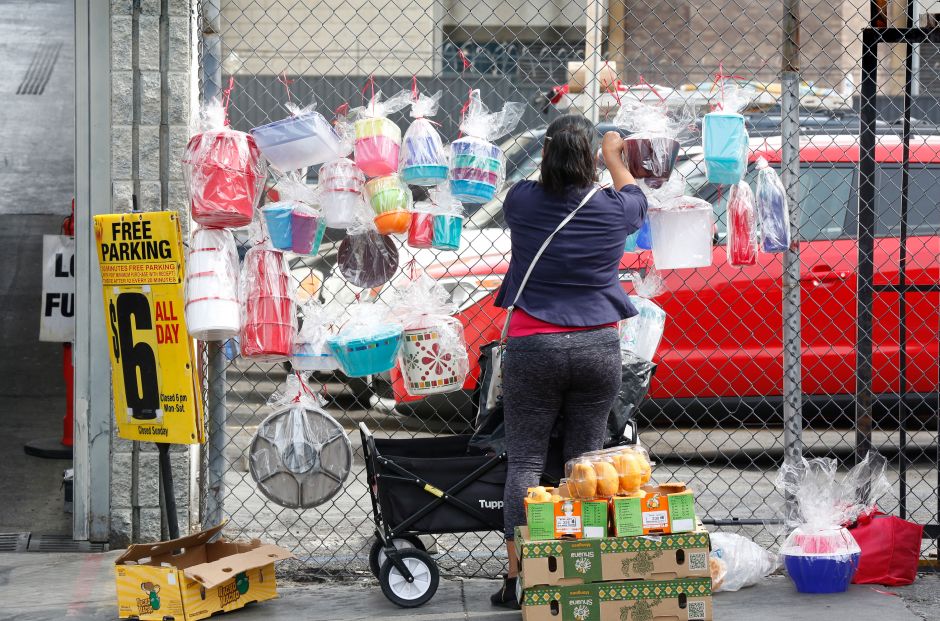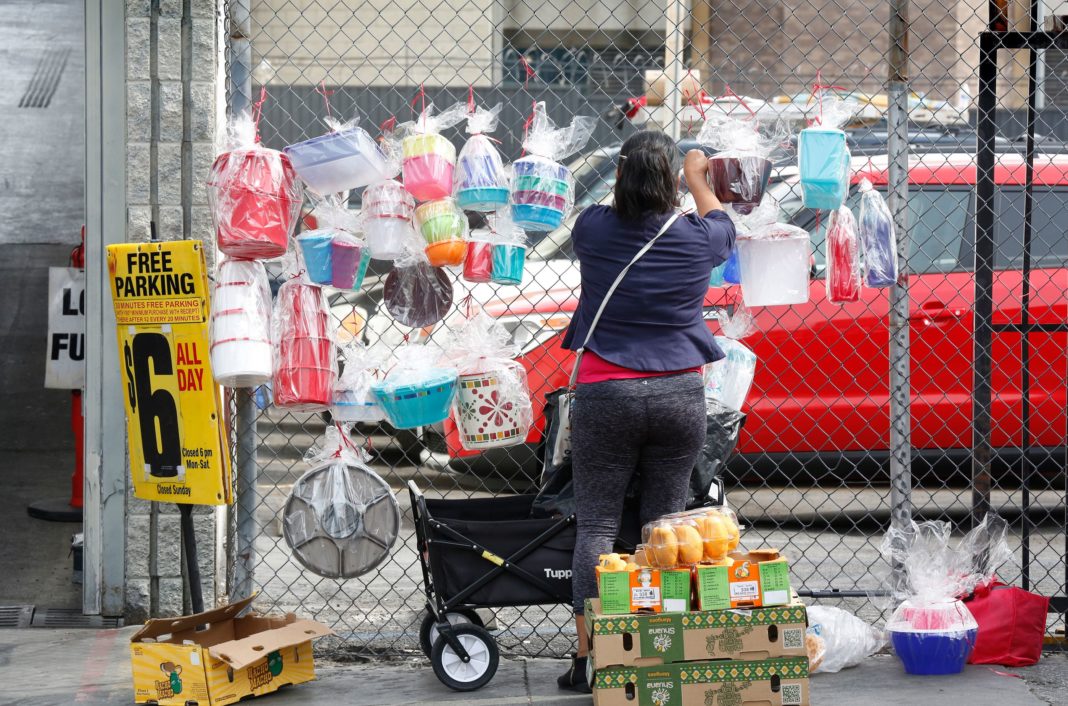
People in low-income areas of Los Angeles are infected and die at twice the rate of most affluent neighborhoods.
Dalia had been working for about five months in a clothing factory in South Los Angeles when the outbreak of the coronavirus COVID-19 occurred in mid-March. In the factory, work increased due to the high orders for facial masks.
Dalia, who was in charge of trimming the masks, sometimes brought extra work home. Like many other undocumented workers, Dalia focused on earning money to help out at home and believed she was safe on the job.
“I was carrying my hand sanitizer, my sanitizing wipes. I thought I was ready, ”said Dalia, 45, who did not use her last name because of her immigration status.
On April 14, when she returned home after work with a load of 500 masks, Dalia began to feel ill.
"I started to feel chills all over my body … At midnight I started to cough a lot and I felt that my waist was breaking in half as well as my head," said the worker. "I knew this was not normal and I told my husband to take me to the hospital."
The next morning, the hospital confirmed that she had coronavirus symptoms, and days later she tested positive.
Dalia said she was more concerned about her two daughters, ages 14 and 8, and her husband, who is diabetic. Finally, her husband also tested positive, while the girls showed no symptoms.
"I didn't know if I was going to get out alive or not," she said. "It is when you are so sick that you pray for a few more days of life."
Dalia and her family live in District 9 of Los Angeles, which includes some of the poorest parts of the city, with four out of 10 residents living in poverty.
Where people live does matter when it comes to how vulnerable they are to the coronavirus.
In Los Angeles County, people in low-income communities, such as the Dalia neighborhood in South Los Angeles, are infected with the virus at twice the rate of wealthier communities, according to a department database. county health as of May 1.
In areas where more than 30% of residents live in poverty, 303 people per 100,000 residents were infected, compared to 156 people per 100,000 in areas where less than 10% live in poverty.
Residents of those low-income communities are also more likely to die from the virus: 15 deaths per 100,000 residents, double the rate of people in the wealthiest areas, according to the database. African Americans have the highest death rate in the county, followed by Latinos.
The Centers for Disease Control and Prevention (CDC) report that people of all ages with underlying medical conditions, such as Dalia's husband's diabetes, are at high risk of becoming infected. Other vulnerable health conditions include chronic lung disease, moderate to severe asthma, severe heart conditions, kidney and liver problems, and obesity.
Overcoming obstacles
Randall Kuhn, a demographer and sociologist at UCLA Fielding School of Public Health who specializes in demographics of vulnerable populations, said the biggest concern for the Latino population is that many are in jobs considered "essential."
"People who work in food preparation, supermarkets, or whatever job they can get because they are in poverty," Kuhn said.
He explained that more research needs to be done in neighborhoods because where people live is important when it comes to their ability to survive the virus.
"We need to know much more, there must be much more evidence, and there must be much more analysis of who is getting sicker, with a real focus on race, neighborhood and poverty," he said.
Dalia and her husband were not hospitalized and both have recovered.
However, they face many difficulties.
The family of four lives in a small studio and it is practically impossible for them to maintain social distance. Dalia's landlord lent her a small trailer parked on the property. There she was isolated for almost two weeks and her husband stayed in the apartment. Her two brothers left food outside their door so they would not become infected. The girls were sent to one of the brothers while their parents recovered.
After a week or so, Dalia began to feel better. However, Dalia and her husband, who are street vendors on weekends, have been unable to work for weeks. They survive on donations from non-profit organizations and individuals. She is not eligible for unemployment because she is undocumented.
Dalia said that the owners of the factory where she worked never offered her any help, so she doesn't want to return to work for a company that doesn't care about workers' health.
"It was easy for them to get rid of me and replace me right away," he said, "because the job doesn't wait."
Jacqueline García is a reporter for La Opinion. This article is part of The California Divide, a newsroom collaboration that examines income inequality and economic survival in California.






